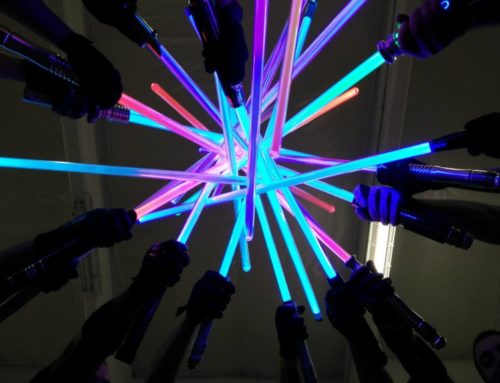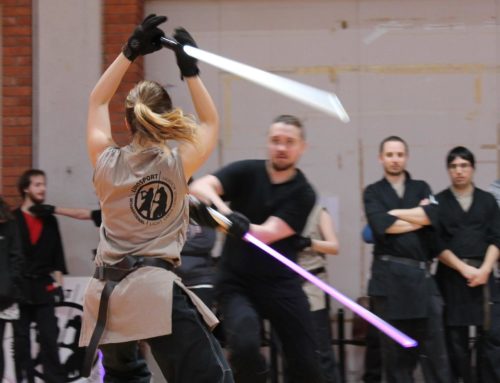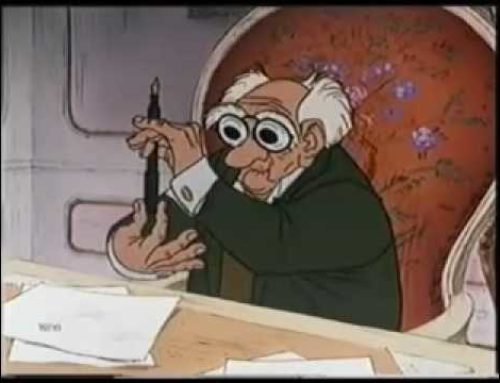The Regulations of the EUROPARENA 2015 International Tournament are available here in English and Italian. Participants are invited to read and acknowledge it before the beginning of the matches.
Il Regolamento del Torneo Internazionale EUROPARENA 2015, disponibile in inglese e in italiano. I partecipanti sono invitati a prenderne visione prima dell’inizio dei combattimenti.
[vc_row][vc_column width=”1/2″][vc_empty_space height=”32px”][dt_fancy_title title=”Regulations” title_align=”left” title_size=”h3″ title_color=”accent” el_width=”100″ title_bg=”disabled” separator_color=”accent”][vc_empty_space height=”32px”][vc_column_text]
1. ADMISSION
art. 1 • Europarena 2015 International Tournament participants must be over 13 years old, enrolled in an affiliated Academy and have attended at least a quarter of a full year’s classes.
Exceptions can be made, at the insistence of a Rector, by SLM Council, at its incontestable discretion.
2. HOW DOES IT WORK
art. 2 • Registration for the Tournament closes on the date published on the website italia.ludosport.net.
Unregistered pupils can show up at the event, but his/her participation will only be possible if someone else misses the event.
The deadline for such a substitution is the roll call at the beginning of the first day of Tournament.
art. 3 • Tournament has two stages: a Preliminary (Group Stage) followed by a Final (Knockout Tournament with single elimination).
In the Group Stage, athletes gain points from each assault in every match, as stated in art. 5 of the present Regulations.
Playoffs can be made in the case of a tie in the final rounds ranking.
If an athlete admitted to the Final stage misses the roll call, a repêchage can be decided by Judges as a body, at their incontestable discretion.
3. EQUIPMENT AND PROTECTIONS
art. 4 • Pupils must present themselves in the arena with their academy uniform, gloves and, for males, genital protection.
Protective glasses or masks are suggested. They will be provided by the hosting Academy.
The hosting Academy will also provide the sabers for the matches.
Pupils who want to use their own personal lightsaber, must show it to the Judges before the beginning of the Tournament, for a compliance evaluation on length and weight. Personal lightsabers will need an official LudoSport blade.
4. MATCHES
art. 5 • Each match in the Group Stage is based on three assaults.
Each assault ends with an OH, either single or double.
In the case of a single OH – obtained according to Rule 6 of sporting Light Saber Combat – the attacking pupil will gain 1 point.
In the case of a double OH, the assault is completed with no points awarded.
Fighters have one minute to conclude the match. Beyond that time, the Judge can assign the victory to the pupil in advantage or declare a common loss (0-0) to both contenders for lack of fighting spirit.
art. 6 • Each match in the Final Stage is based to the best of five assaults: the pupil who gains three points wins the match.
Points are assigned as stated in art. 5 of the present Regulations.
The time of the match can be increased by Judges as needed, or even considered unessential.
art. 7 • The pupil hit on an IH or OH target must declare it out loud.
In case of a touch on an IH target, declaration must be made with a movement of the struck limb (arm or leg). Including the following:
– interruption of the movement must be evident
– the saber of the struck pupil must not be in a guard position
– the tip of his/her saber must not be between the opponents.
If the OH target is covered with an IH target (ex. A retracted forearm covering the side of torso), the struck target will be always considered as an OH.
art. 8 • IH touches are not counted; they can be punished if improperly performed, though.
The discretion of the Judges can also bring them to punish, a lack of fighting spirit , repeated attempts to reach an IH target without continuing to seek the point.
art. 9 • According with the Cu.Ri. rule, blows must make contact or finish a very short distance from the target, to be considered valid.
Blows on target must be controlled, in order to avoid harming the opponent. Blows with no attention paid to the opponent’s safety shall be punished.
art. 10 • We consider the following permitted physical contacts; disarming techniques, blocks, grips and pushes with both hands and feet.
If the unarmed action is effective, the performing fighter must conclude it with the utmost care of his/her opponent’s safety.
Putting down or otherwise neutralising an opponent doesn’t win a point if it doesn’t comply with art. 5 of the present Regulations.
Pushes with hands and feet will be punished if performed without control or in a dangerous way for the opponent’s safety.
In the case of a match against an under 16 youngling, a superior level of control is required. Any lack of control shall be punished by the Judges, at their incontestable discretion.
art. 11 • Lunges are forbidden and punished.
The only attacks, present in some Styles, that can start with an apparent “lunge” movement, are always concluded with a cutting touch and never with the tip of the blade.
In some passive guard positions, a leaning movement against the target is permitted, with the utmost control and a quick withdrawal to limit the possible harm.
For example, if a fighter moves forward, ignoring the opponent’s guard, and is touched by the tip of the other’s saber, he/she will lose a point. In this case, the other fighter must take care of having a passive touch on the opponent chest, with the aforementioned withdrawal.
art. 12 • Contact in the face area is forbidden and severely punished.
If there’s the risk of an accidental contact in such an area, the action must be stopped before the impact.
5. JUDGEMENT
art. 13 • Calls of Judges are unquestionable. Every objection will be punished.
art. 14 • Judges have the power to invalidate or punish uncontrolled blows or movements that do not complying with LudoSport standards, at their incontestable discretion.
The fighter who receives three penalties within the same match, will lose a point.
In more serious cases, Judge can also declare the end of the match declaring the loss of the sanctioned fighter.
art. 15 • Only Judges – possibly on the advice of Instructors – can decide to review video footage, if available, to define the result of those assaults that are more difficult to reading.
art. 16 • During the match, only the Judge can stop the action. Whenever a fighter has something to point out (physical problems, mechanical issues…) he/she will need to stop, raising the saber arm and waiting for Judges’ intervention.
[/vc_column_text][/vc_column][vc_column width=”1/2″][vc_empty_space height=”32px”][dt_fancy_title title=”Regolamento” title_align=”left” title_size=”h3″ title_color=”accent” el_width=”100″ title_bg=”disabled” separator_color=”accent”][vc_empty_space height=”32px”][vc_column_text]
1. AMMISSIONE
art. 1 • Sono ammessi al Torneo Internazionale Europarena 2015 i soli atleti di età superiore ai 13 anni iscritti ad una Accademia affiliata LudoSport che abbiano frequentato per almeno un trimestre.
Eventuali eccezioni potranno essere concesse, su richiesta dei relativi Rettori, dal Consiglio SLM a suo giudizio insindacabile.
2. STRUTTURA E FUNZIONAMENTO
art. 2 • Le iscrizioni al Torneo vengono chiuse in una data comunicata attraverso il sito italia.ludosport.net.
Chi non si sia iscritto entro il termine prestabilito può presentarsi ugualmente al Torneo, ma la sua partecipazione è subordinata all’eventuale ritiro, mancata presentazione o ritardo di un altro allievo regolarmente iscritto. Termine ultimo per tale sostituzione è la Registrazione partecipanti del primo giorno di gara.
art. 3 • Il Torneo si svolge in due fasi: una Fase Preliminare con gironi all’italiana e una Fase Finale con scontri diretti.
Nella Fase Preliminare, ogni atleta accumula punti in base agli assalti vinti in ogni combattimento, come indicato nell’art. 5.
Sono previsti spareggi in caso di parità nella classifica finale dei gironi.
In caso un atleta ammesso alla Fase Finale non si presenti all’appello, potrà essere effettuato un ripescaggio da parte dei Giudici di gara, con giudizio collegiale insindacabile.
3. EQUIPAGGIAMENTO E PROTEZIONI
art. 4 • È obbligatorio presentarsi sul campo di combattimento con la divisa regolamentare, guanti e – per i maschi – protezioni per i genitali.
È consigliato l’utilizzo di occhiali protettivi o maschera (forniti dall’Accademia ospitante).
L’Accademia fornirà le saber per i combattimenti. Chiunque volesse utilizzare la propria arma, dovrà presentarla ai Giudici di gara prima dell’inizio delle competizioni per una valutazione di conformità e dovrà comunque montare una lama autorizzata LudoSport.
4. COMBATTIMENTI
art. 5 • Ogni incontro della Fase Preliminare si svolge sulla base di tre assalti.
Ogni assalto termina al verificarsi di un OH, singolo o doppio.
In caso di singolo OH – ottenuto secondo quanto stabilito dalla Regola 6 del Light Saber Combat sportivo – verrà assegnato un punto a chi lo ha messo a segno.
In caso di doppio OH, l’assalto sarà esaurito e nessun punto verrà assegnato ai combattenti.
I combattenti hanno un minuto di tempo per concludere il combattimento. Oltrepassato tale limite il Giudice di gara potrà assegnare la vittoria a chi è in vantaggio o attribuire la sconfitta (0-0) a entrambi, sanzionandoli per scarsa combattività.
art. 6 • Ogni incontro della Fase Finale si svolge al meglio dei cinque assalti: chi ottiene tre punti vince l’incontro. I punti sono assegnati come da art. 5.
Il tempo concesso al combattimento può essere aumentato dai Giudici di Gara fino a renderlo elemento inessenziale.
art. 7 • Chi subisce un colpo al bersaglio IH o al bersaglio OH deve immediatamente dichiararlo a voce alta.
Nel caso di un colpo subito al bersaglio IH, questo va prontamente segnalato con un movimento del braccio o della gamba colpita. In questo caso, inoltre:
– l’interruzione del combattimento da parte del soggetto colpito deve essere evidente
– la saber del soggetto colpito non potrà avere una posizione di guardia
– la punta della saber non potrà comunque trovarsi direttamente tra sé e l’avversario.
Se il bersaglio OH viene coperto da un bersaglio IH (esempio: un avambraccio ritratto a copertura del fianco) l’eventuale tocco verrà considerato in OH.
art. 8 • Gli IH non sono oggetto di conteggio; possono però essere sanzionati in caso vengano portati scorrettamente.
La discrezionalità del Giudice di gara potrà portarlo a sanzionare come scarsa combattività anche ripetuti movimenti a bersaglio IH non finalizzati alla conquista del punto.
art. 9 • Secondo la regola del CURI, i colpi vanno portati a contatto o a brevissima distanza dal bersaglio per essere considerati validi.
I colpi a bersaglio andranno sempre controllati, al fine di non provocare danni all’avversario. Colpi a bersaglio portati con poca attenzione nei confronti dell’avversario verranno sanzionati.
art. 10 • Sono ammessi contatti fisici che prevedano tecniche di disarmo, blocchi, prese, e spinte con mani o piedi.
Nei casi in cui l’azione a mani nude dovesse andare a buon fine, il combattente – autore dell’iniziativa – dovrà concludere l’azione preoccupandosi di non provocare alcun danno fisico al suo avversario.
L’atterramento o neutralizzazione di un avversario non porta alla sua sconfitta se non si verifica almeno una delle fattispecie di cui all’art. 5.
Spinte con mani o piedi vengono sanzionate se portate senza controllo o rischiando di provocare danni fisici all’avversario.
Nel caso il combattimento sia contro un allievo di classe Youngling (inferiore ai 16 anni) viene richiesto un superiore controllo nei colpi. L’assenza di tale controllo potrà essere oggetto di sanzione da parte del Giudice di gara, a suo insindacabile giudizio.
art. 11 • Gli affondi non sono ammessi e verranno sanzionati.
Gli unici attacchi – previsti in alcuni stili – che secondo gli standard possono iniziare con un movimento di “affondo”, vanno sempre conclusi con un contatto di taglio e mai con la punta della lama. Unica eccezione, alcune guardie passive dove è concesso APPOGGIARE la punta della propria lama a bersaglio in assoluto controllo e ritirando poi prontamente il braccio a contatto avvenuto.
Ad esempio, nei casi in cui l’avversario dovesse avanzare, ignorando la guardia del suo sfidante e quindi andando ad impattare contro la punta della lama, subirà un colpo a segno. Nel caso indicato, chi andrà a bersaglio mantenendo una guardia e quindi colpendo passivamente di punta, dovrà avere cura di ritirare prontamente il braccio armato e fare il possibile per evitare danni all’avversario.
art. 12 • Il contatto è vietato e severamente sanzionato quando dovesse avvenire nella zona del volto. Nei casi in cui si dovessero verificare accidentalmente rischi di contatto con il volto l’azione dovrà essere obbligatoriamente fermata prima dell’impatto.
5. GIUDIZI DI GARA
art. 13 • Le decisioni dei Giudici di gara sono insindacabili. Eventuali contestazioni verranno sanzionate.
art. 14 • I Giudici di gara potranno, a loro insindacabile giudizio, annullare o sanzionare colpi portati in modo incontrollato, o con movimenti diversi da quelli previsti dagli standard LSCA.
Il combattente che riceve tre sanzioni all’interno dello stesso incontro si vedrà attribuire un punto a proprio svantaggio.
Nei casi più gravi, il Giudice potrà dichiarare terminato l’incontro attribuendogli la sconfitta.
art. 15 • Solo i Giudici di gara, eventualmente su consiglio degli Istruttori, potranno decidere di far ricorso alla visione delle riprese video per definire l’esito di combattimenti di difficile lettura.
art. 16 • Durante il combattimento solo il Giudice di gara potrà interrompere l’azione. Nei casi in cui un combattente dovesse segnalare qualcosa (problemi fisici, attrezzatura difettosa ecc..) dovrà fermarsi alzando il braccio armato ed attendere l’intervento del Giudice.
[/vc_column_text][/vc_column][/vc_row]







